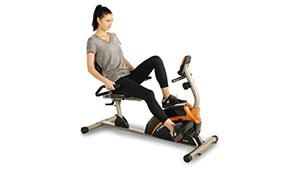
We change our brake pads, tires and bar tape when they wear out, but many cyclists are unaware that bike chains have a shelf life too. It's easy to forget since a well-maintained chain doesn't squeak, and if everything is working properly, why replace it?
You may not notice a stark difference, but a worn out chain can impact your shifting efficiency and ultimately the condition of the rest of your components. What does this mean? As a chain is used, the internal rollers and rivets wear out, causing the chain to stretch and lengthen. This in turn can wear out the teeth on your cassette and chainring due to misalignment between moving parts. Wait too long and you'll end up needing to replace both your chain and half your drivetrain, costing you more time and energy.
No matter what blanket statement you read online (most resources will say 2,000 miles as a rule), not all chains need to be replaced at the exact same mileage. Different brands of chains wear differently, and varying riding styles and environments can dramatically impact your chain's lifespan. Upkeep is perhaps the most important rule—a regularly-cleaned and lubricated chain will last much longer than one left caked in dirt and debris. There are a few ways to accurately tell if you need a new bike chain without using the less-than-accurate, mileage-based decision.
Chain Checker
First, you can precisely measure the length (or health) of your chain with a chain checker. Park Tool makes a great device that will indicate when a chain reaches 0.5 percent and 0.75 percent and needs to be replaced. If you don't want to purchase one yourself, your local bike shop will have one and can also advise on a replacement chain.
Ruler
Second, if you're a do-it-yourself cyclist, using a ruler can also help determine whether your chain is worn out. A road bike chain has rivets every half-inch, so you can take a standard ruler and measure the distance between a set number of links.
You won't notice a change between two adjacent rivets, so using 12 inches worth of links (remember to keep it taut) will show more of the variance. We're talking minute details here—if it's more than one-sixteenth of an inch past the center of the rivet at the 12-inch mark, consider replacing.
Pull Test
Lastly, if all this technical know-how isn't your thing, there's an easy—albeit less-accurate—way to determine if you need a new chain. Shift into your largest chainring and smallest cog and simply pull on the chain where it's positioned at the front of the chainring (the side closest to the front wheel). If the chain lifts off the chainring, think about replacing your chain. The more daylight between the chain and the chainring, the more stretch you have.
To have other cycling-related tips and techniques sent straight to your inbox, click here to subscribe to the ACTIVE Cyclist newsletter. To find your next century ride or gran fondo, click here .
READ THIS NEXT: A Step-by-Step Guide to Cleaning Your Drivetrain








Discuss This Article